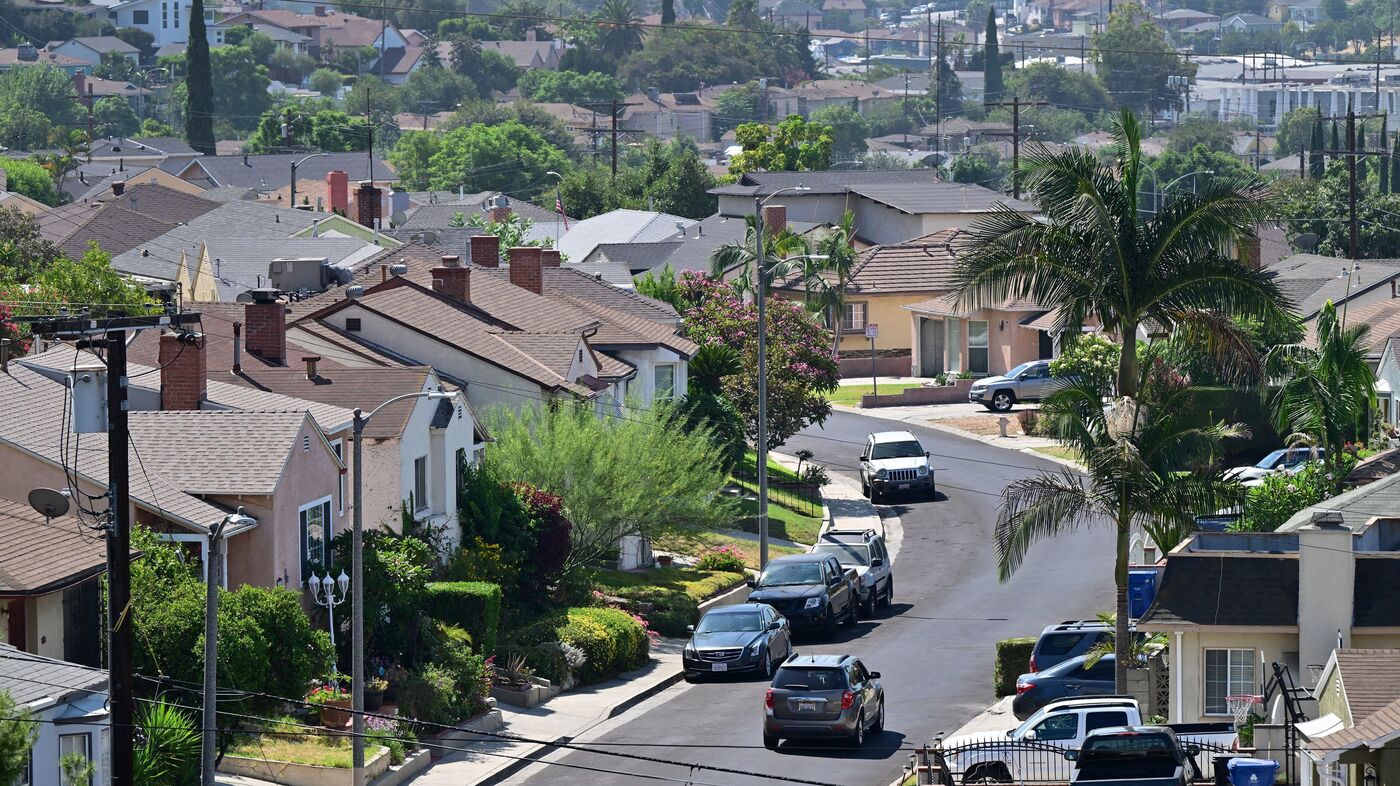A vehicle drives through a residential area of Los Angeles.
Frederic J. Brown/AFP via Getty Images
hide caption
toggle caption
Frederic J. Brown/AFP via Getty Images

A vehicle drives through a residential area of Los Angeles.
Frederic J. Brown/AFP via Getty Images
Bank of America launched a pilot program last week that waives a down payment, closing costs, minimum credit score and mortgage insurance for some first-time home buyers in certain Black and/or Latino neighborhoods. .
The goal is to strengthen homeownership in communities that have historically struggled in the real estate market and to help Black and Latino families in particular become wealthier over time.
Some experts say it’s a good step forward, but worry the program won’t go far enough to support homeowners once they’ve bought a home.
“It’s not that we just get people into the house, but we’re also able to help them have the savings, the resources to make sure their homes are safe and healthy for the long term.” , Samira Payne, director of community revitalization at Rebuilding Together, a nonprofit group that focuses on safe and healthy housing, told NPR.
What is the program about?
Eligibility will primarily be determined by income, home location, and bill payment history such as rent, phone, utilities, and auto insurance. Applicants are also required to complete a homebuyer certification course.
The initiative is taking place in Charlotte, Dallas, Detroit, Los Angeles and Miami, particularly in neighborhoods where Black and/or Latino residents make up the majority.
“Homeownership strengthens our communities and can help individuals and families build wealth over time,” AJ Barkley, head of neighborhood and community lending for Bank of America, said in a statement. statement.
Depending on the success of the initiative, the company will consider expanding in the coming months, a Bank of America spokesperson told NPR.
The racial gap in home ownership
Racial inequalities in the country’s housing system date back to slavery and have been reinforced by segregation practices such as redlining, where federal agencies refused to insure mortgages for people in certain areas. The term is most associated with black neighborhoods.
Today, many residents of predominantly black or Hispanic neighborhoods continue to struggle in the housing market due to discriminatory practices.
In 2020, black and Hispanic applicants were more likely to be rejected for mortgages than their white or Asian counterparts, according to a February report of the National Association of Realtors.
While white, Asian, and Hispanic Americans all saw “decade highs” in homeownership rates that year, the rate for black Americans turned out to be slightly lower in 2020 than in 2010.
No down payment or minimum credit score will help low-income black, Latino and white borrowers
For some potential buyers, it can take years or decades to save up for a down payment on a home. This may be especially true for black and Latino families who earn about half the average white household, according to a report 2021 of the Federal Reserve.
“Even a 3% down payment on a home is a level of wealth or just reserve money that many families don’t have. And that will be disproportionately true for black and Latino borrowers,” Jesse Van Tol, president and CEO of the National Community Reinvestment Coalition, told NPR.
Eliminating a minimum credit score and reviewing payment history will also help families who have student loans or medical debt but are generally responsible borrowers, he said.

Van Tol expects both of these strategies to help communities that have historically been starved of capital and credit.
“It will help a lot of black and Latino borrowers and I think it will help a lot of low-income white borrowers as well,” he added. “This is a good thing.”
Black and Latino neighborhoods need investment to boost home values and secure wealth
According to a Bank of America spokesperson, the program’s homebuyer certification course is designed to demonstrate a candidate’s ability to meet their current obligations and create a budget roadmap to keep their property going. coming.
But Payne, of Rebuilding Together, said that was not enough.

“The First-Time Home Buyers Course can help build knowledge about saving and maintenance, but we also recognize that there are things that go beyond those initial savings, such as expenses contingencies, essential home repairs, disaster recovery,” Payne said.
She added that for the program to be a long-term success, there needs to be greater investment in the targeted neighborhoods in general.
“Having resources in the community beyond homes, such as quality community spaces, organizations and schools – all of these are linked to realizing the benefits of homeownership and helping people build their resilience to challenges that may arise,” Payne said.

